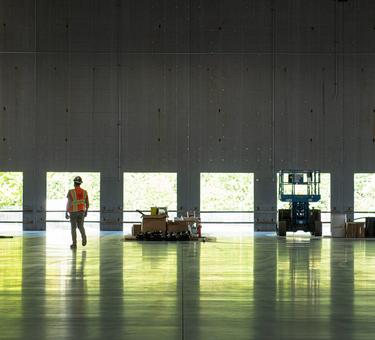Covid-19 has conflated more than five years of evolution in the retail real estate landscape into less than five months, with the sharp rise in online spending during lockdowns piling pressuring on landlords in the sector to consider conversion of their properties to e-commerce warehouses to meet spiralling demand for high quality and infill logistics space, particularly in the ‘Last Touch®’ or ‘last mile’ distribution areas of urban conurbations.
But new Prologis research: Logistics Real Estate – Sizing the Retail Conversion Opportunity, concludes the multiple economic, political, physical and legal obstacles to transformation will mean this trend will have a limited impact on the installed logistics supply, demand market balance and future growth. The most pronounced effect within the retail sector is likely to be seen in shopping mall redevelopments, particularly for those lower category centers less dominant in their local market catchment areas, and which have experienced the most disruption from online spending.
While the Prologis report focused on the US market, the trends the research identified are also likely to play out across Europe to varying degrees and according to national retail real estate sector configurations and their ongoing viability vis a vis alternative uses, such as logistics. There are key differences, however, between the US and European retail landscapes, Dirk Sosef, Vice President Research & Strategy, noted: “Europe has a higher number of high streets in historic city centers and fewer troubled pan-regional retailers such as JC Penny or Sears in the US.”
Retail-to-logistics conversions are complex and face many practical market hurdles, so are expected to take a long time to evolve. Prologis examined a range of retail format conversion candidates and identified four main types of challenges that these transformations face:
- Economic, including re-tenanting as retail; other higher and better use cases including apartments; and, high costs basis as logistics alongside the frequent presence of locally competitive alternative logistics submarkets.
- Political, including restrictive zoning and entitlements; community opposition; and, downzoning concerns including a perceived loss of sales tax revenue.
- Physical, including poor reconfigurability of existing structures; inefficient site layouts/geometry; and, sites as too small for logistics uses.
- Legal, including reciprocal easement agreements (REAs); co-tenancy limitations; and, multi-party negotiations that prevent or elongate redevelopment to logistics.
Opportunities for conversion will emerge, but will vary widely by retail format, center sizes and market. Prologis estimates retail-to-logistics conversions in the US will total 77,000 MSF (7,100 MSM) of new logistics space over the next decade, or 8 MSF per year. With total logistics stock in Prologis’ US markets expected to rise to 10 billion sqft by 2030, that means retail-to-logistics conversions would account for less than 1% of that figure.
Conversions are likely to be most pronounced in the US mall space, although as a modest sized overall category, does not translate to significant new logistics supply. The retail business is substantially larger among smaller formats, but the rate of potential conversions among smaller formats will likely be significantly lower.
For the full report, please click here.
